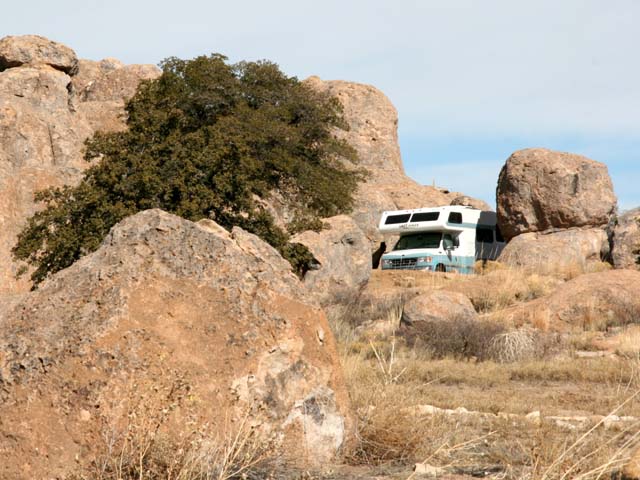
I've added a few places to the map to reflect our travels
Our first drive was the Appalachian Range Route. I'm embarrassed to admit this, but I had always assumed (mistakenly, it turns out) that the Appalachians were mainly in the Eastern United States, basically Kentucky and Tennessee. I think I watched too much TV as a kid. I now have learned that the Appalachians begin in Newfoundland and extend roughly 1,500 miles down into southeastern Canada and then south-westward into the United States, ending in central Alabama (with foothills in northeastern Mississippi).
The drive was very pretty, as it wound up and down and through the Appalachians, but my, there were a lot of trees. And not much else. Beyond the trees, there were lakes and rivers, beckoning to canoeists and kayakers, of which we are neither. Maybe in our next lifetime. There were also lots of logging trucks on the road, so it wasn't as relaxing a drive as it might have been.
Truthfully, there was nothing to distinguish this road from any other very pretty forested road in the United States, and we were hankering for something uniquely New Brunswickian.
Our wish was granted in Caraquet.
Caraquet, New Brunswick is on the Acadian Coast, right on the Chaleur Bay. It is home to approximately 4,500 Acadians and is where you will find the Village Historique Acadien. Acadian? Art and I had heard the word before, and we knew there was some connection between the Acadians and the Cajuns in Louisiana. But that was it. So when we arrived in New Brunswick and discovered how many Acadians live here (roughly 30% of the province's population!), we then wanted to learn all we could about these folks. That's what traveling does to a person.
Briefly (I'll try, really I will!), we have now learned that the Acadians were among the very earliest of European settlers here in North America, settling in Nova Scotia in the early 1600s (New Brunswick was part of Nova Scotia in those days...we'll tackle that history lesson in a future blog update ;-D ).
I cannot tell the Acadian's story any better than the following, which is from the website of the Village Historique Acadien:
"Our history does not date from ancient times, as that of certain peoples whose origins are lost in the mists of time. The birth of the Acadian people can be determined very precisely to the first half of the 17th century, as pioneers, coming mainly from the western provinces of France, but also from the Basque country, from Flanders and elsewhere. They established themselves on the shore of what they called the Baie Française, now the Bay of Fundy, and formed the first white community in North America. Peaceful, living in harmony with the native populations who were their neighbours, they gave their new country the name Acadie, which is still printed indelibly in our hearts."
The Acadians, who after only a few generations had developed their own culture and regarded themselves as a distinct people, soon found their beloved Acadia at the center of a continuous string of wars, wars fought between the English and the French over the possession of the Acadian homeland. In 1755, Acadians who refused to swear an oath of loyalty to the British crown were deported from their own lands.
Often at the point of a bayonet, Acadians were forced to board ships that would carry them away from their homeland, and in the process, many families were separated. Expelled Acadians dispersed to France or French-controlled Canada. Some went to the lower British colonies (and eventually made their way to Louisiana where they became known as Cajuns). Others fled deeper into Nova Scotia.
One hundred and fifty years of establishing themselves and their very unique culture, and in 1755, it was all gone. But was it?
Fortunately, Acadia was alive and well in exile.
So when the Acadians began to return, they brought their culture and traditions back with them. They were not allowed to live in their former settlements, but still they were able to not only start anew, but also thrive...a proud and resilient people who now comprise nearly one third of the population of New Brunswick.
After learning about the Acadians, we then decided to try a bit of time traveling. We visited the Village Historique Acadien, in Caraquet. The village recreates the Acadians' second settlement period, in the late 1700s and the 1800s. There are more than 40 restored buildings, staffed with bilingual interpreters in period dress who bring the Acadian customs and traditional trades to life.
Here are a few of the photos we took at the Village. We really did feel as if we had gone back in time. It was a very special visit and in finding the Acadians, we also knew we had found something "uniquely New Brunswickian."


We were treated to demonstrations of both yarn and thread spinning.

Colors for dyeing the yarn were obtained both locally (spruce bark, onion skins, roots, flowers, ferns) and were also imported (indigo from a plant from India, red from both a flower from France and an insect from Mexico).



Possibly the most important man in town.

The Proud Printer

Just Because
I may be of British and Polish descent, but I still wish to say:
Viva L'Acadie!
--- Barbara (currently in Pictou, Nova Scotia...yes, we are THAT behind on our blog!)
Day 61
Total miles: 6,553

1 comment:
Score! You found spinning wheels and dye pots! My blue/purple handspun is in good company in New Brunswick. "I'd like to teach the world to spin in per-fect harmony . . ." Fiber: the answer to world peace and understanding. ;)
Post a Comment